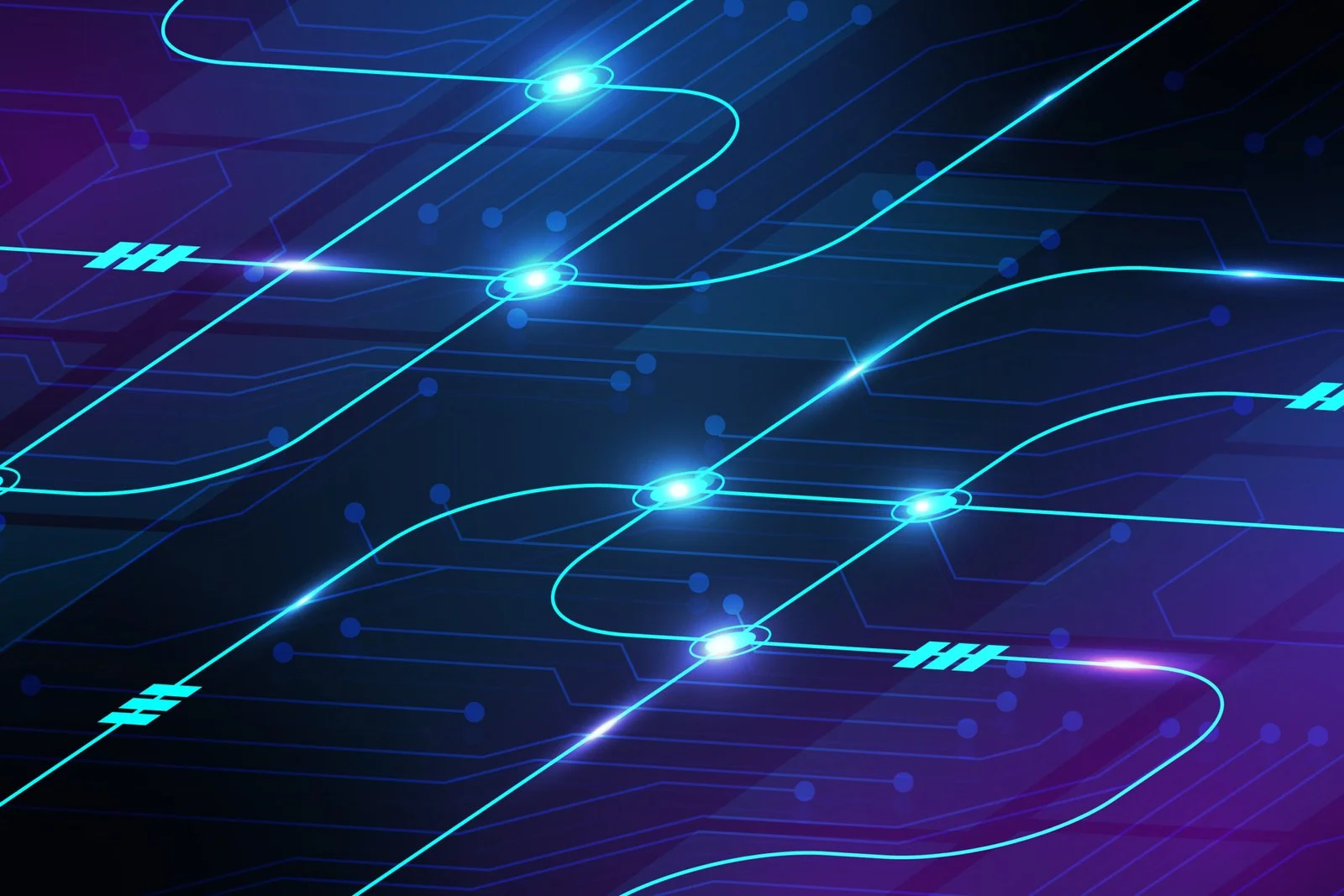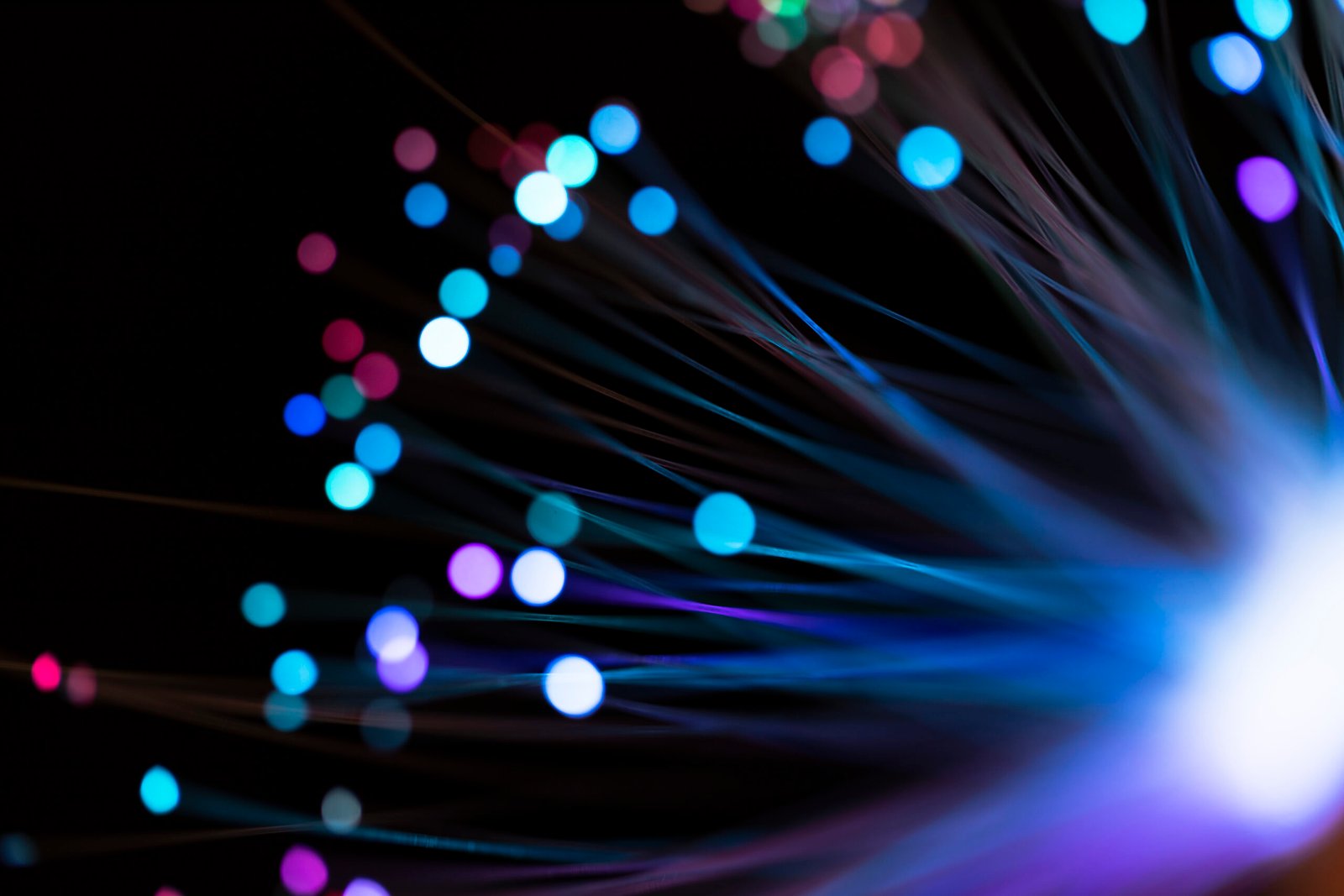
LiFi Speed Explained for Faster & Smarter Connectivity
LiFi Speed: High-Speed Internet with Light Fidelity | Oledcomm

LiFi Speed Explained for Faster & Smarter Connectivity
As high-speed communication becomes a priority for internet users, techies are looking for ways to overcome the limitations of conventional internet. WiFi-based networks which rely on radio signals to carry data can be unreliable on many levels. This is because radio signals are easily intercepted or interfered with, resulting in sub-par performance in terms of connection speed and security. LiFi technology enters as a game-changer for the world of wireless communication, by offering improvements in terms of speed, security, and connection stability. So, in which applications can LiFi technology excel over traditional internet, and where can we expect it to replace WiFi for good? Read on to find out!
Understanding LiFi Technology
LiFi, or Light Fidelity technology is an optical communication technology that uses light signals to create a wireless network for data transmission. In the past, traditional internet technologies have relied on radio waves to transfer data. LiFi connections do away with dependence on radio frequency signals by utilizing an invisible spectrum of light to carry information. The present-day LiFi technology is inspired by visible light communication systems or VLCs, which work by modulating light signals at very high speeds to transmit data across space.
LiFi-based products are taking over the market by providing an efficient and high-speed alternative to traditional internet. LiFi is quick to install and easily adapts itself to the specifications of different projects, making it a promising innovation in the world of communication technologies.
LiFi Vs Traditional Wireless Technologies
Since the launch of LiFi technology in 2011, there has been a consistent growth in the demand for LiFi-backed products. Over the years, many industrial sectors have shown a preference for the newly launched LiFi internet over traditional WiFi. What are the benefits of LiFi that make it better than conventional networks? Here are four key areas where LiFi surpasses traditional WiFi in quality:
-
1. LiFi Speed
Compared to traditional WiFi, LiFi technology offers increased bandwidth, lower latency, and higher speed of connection. This is because light signals don't face interference from other electronic devices, networks, or infrastructural structures in their environment. This allows LiFi technology speed to achieve higher data transmission speeds that could easily reach 4-5 Gbps.
Read more:Oledcomm Doubles LiFi Speed to 2 GBPS
-
2. Faster Installation
The installation process for conventional networks usually involves the deployment of heavy wiring and cables. The installation process for LiFi connections requires minimum equipment, making LiFi networks quick and easy to install, resulting in reduced deployment time.
-
3. Better security
The inherent nature of light waves makes them a secure medium for data transmission. This is because light signals cannot cross walls, making it physically impossible to access them outside their predetermined zone of coverage. Moreover, light waves are harder to intercept than other electromagnetic signals, making it difficult for hackers to infringe on the privacy of LiFi signals.
Read more:Internet Security - Why opt for LiFi?
-
4. Environmental Impact
WiFi-based internet uses heavy electrical equipment and higher power to function. In comparison, a LiFi network can be made functional with just a few key parts and does not need long wires or modification of existing infrastructure. Besides, a LiFi connection uses a minimal amount of electricity because it usually depends on power-saving LED bulbs to transmit data, helping reduce the carbon footprint of operating a LiFi-based connection.
-
5. Health Impact
Long durations of exposure to radio frequency signals used in WiFi can have negative impacts on human health. This situation can be remedied by replacing WiFi with LiFi technology, as the latter relies on light waves to transfer data, reducing the presence of harmful radio waves in our living spaces.
Overcoming Challenges and Future Prospects
When compared to conventional internet networks, LiFi is a clear winner in terms of efficiency and speed. However, as a relatively new innovation, LiFi-based networks come with their own sets of challenges. Given this fact, can LiFi be considered a reliable alternative for achieving high-speed wireless internet? Let us try to answer this question by understanding the key challenges as well as prospects for LiFi technology.
Addressing LiFi Challenges
-
1. Lower coverage range
Most LiFi networks rely on line-of-sight communication, i.e. there must be a direct line of sight between the data-transmitting light source and the signal-receiving device. This feature can result in a lower network coverage for LiFi-based communication systems. Also, obstacles such as walls or furniture can block the LiFi signal, leading to lowered mobility for users.
-
2. Scalability
Deploying LiFi networks in larger areas such as offices or university campuses might be difficult. This is because LiFi signals cannot cross physical barriers and are susceptible to interference from ambient lighting. Consequently, it can take significant infrastructure planning to integrate LiFi capability into complex environments that need a wider scale of network coverage. Oledcomm devices solve this problem by using specific filters that allow only LiFi signals to pass through, resulting in no disturbance from indoor or outdoor lights.
-
3. Limited User Awareness
As a new technology, LiFi faces the challenge of establishing itself as a viable communication tool for a wider user base. A majority of businesses are not aware of the potential benefits of LiFi technology. There is a need for consumer-directed education to increase public awareness about the advantages of switching to LiFi. Because of limited user awareness, companies providing LiFi-based products are compelled to invest in extensive marketing campaigns to reach their consumers.
Future Trends and Developments
LiFi technology is a game-changer in terms of speed, reliability, and security. With continued research and innovation, companies such as Oledcomm are launching a range of LiFi products to meet the unique compatibility needs of different projects. With the release of the IEEE 802.11 bb global light communications standard, there is a rapid growth in developments within the LiFi industry. Here are some key trends and predictions that reflect the future of LiFi:
With the introduction of AI-enabled electric vehicles and a growing standardization of road safety protocols, there is a rising demand for light-based systems that promote real-time communication on the road. The utilization of LiFi for smart traffic management is expected to integrate LiFi products into vehicle-to-vehicle(V2V) and vehicle-to-infrastructure(V2I) communication.
With a rising number of cybersecurity challenges faced in using WiFi and radio frequency-based internet, there is a need for safer LiFi networks in the tech market. Industries such as IT, defense, medicine, and education are investing heavily in improving privacy protocols for their data systems, predicting a growing demand for LiFi-based solutions.
LiFi is an ideal solution for establishing wireless communication systems within passenger aircraft and spacecraft. LiFi-based connections can offer high-speed data transfer rates even in space, as they do not require radio waves to transmit information. As a result, we can get a reliable and interference-free internet system in aircraft that use LiFi technology. Further, LiFi systems also offer fuel-saving and cost-saving benefits by reducing aircraft carrier weight as their deployment does not require heavy wiring or cables.
Explore the possibilities of high-speed communication with Oledcomm!
After learning more about the benefits of LiFi technology, it's time to think about how it can improve your life. LiFi products can offer better speed and security in all areas of communication. Products utilizing LiFi technology can fast-forward the growth of your businesses and projects. So, if you are ready to try out connectivity at the speed of light, contactOledcommnow!
- Increased bandwidth allowing for higher data transmission rates.
- Light signals offer better speed than radio waves resulting in lower latency.
- Lower atmospheric interference contributing to faster data transmission.
- Efficient modulation techniques enhancing speed and reliability.
- Increased bandwidth and lower latency, resulting in faster internet speeds.
- Light signals are harder to intercept enhancing data security
- Minimal infrastructural requirements and energy efficiency
- Reduces health risks due to prolonged exposure to radio frequency signals.
- Industrial automation: LiFi can facilitate fast and reliable communication in industrial environments where real-time data transmission is essential.
- Healthcare: LiFi can support high-speed data transfer in healthcare settings, enabling quick access to medical records and diagnostic imaging.
- Transportation: LiFi can enhance communication systems in vehicles, aircraft, and public transportation, improving passenger connectivity and safety.
- Military : Wifi is prohibited in military environments for obvious security reasons, therefore they connect their equipment through ethernet cables which leads to hundreds of meters of cables, very complicated logistics to transport and then wire everything. LiFi replaces those cables while offering the same level of security (or even higher because a wire can be cut or deviate)
Recent articles

Categories
See some more...




